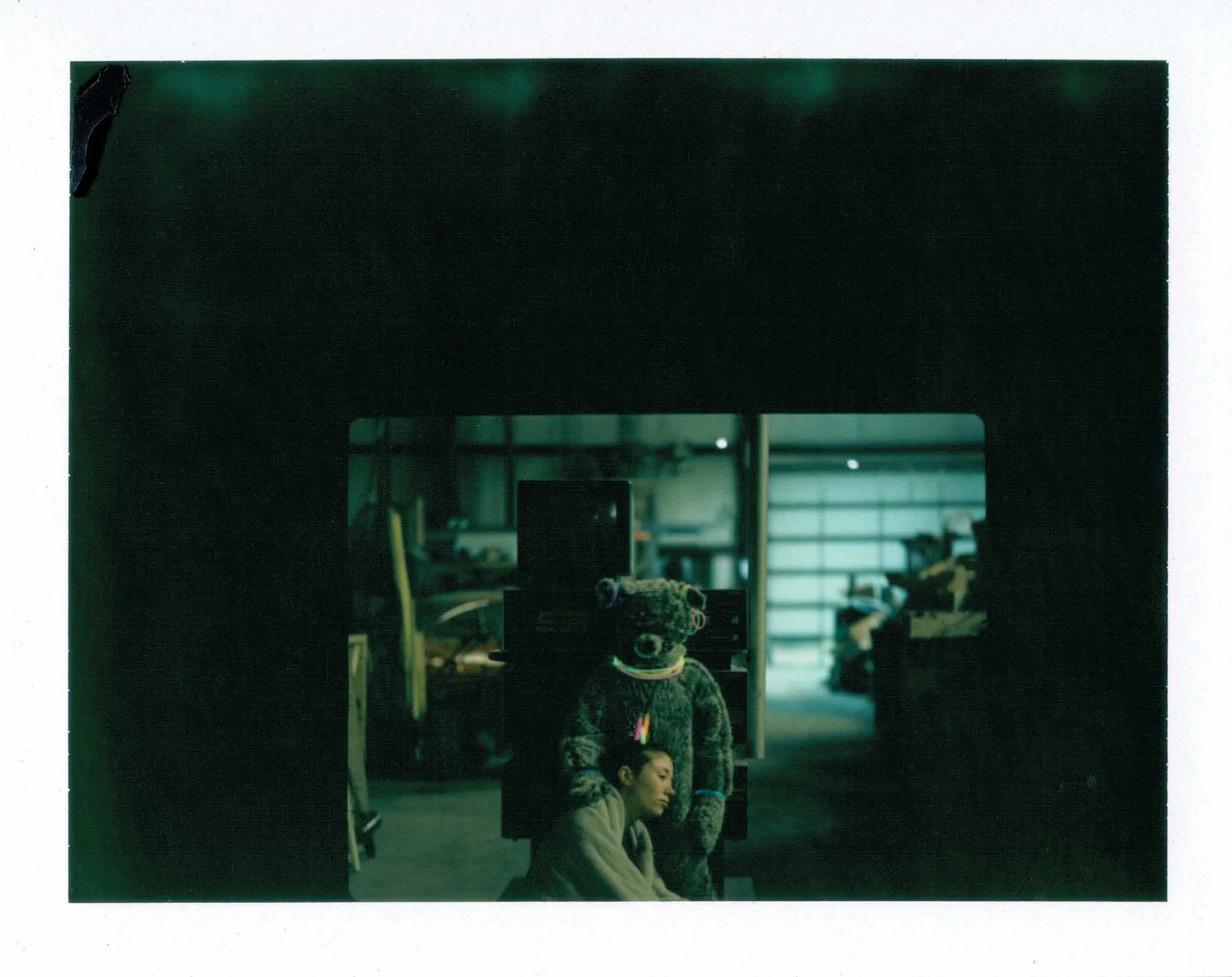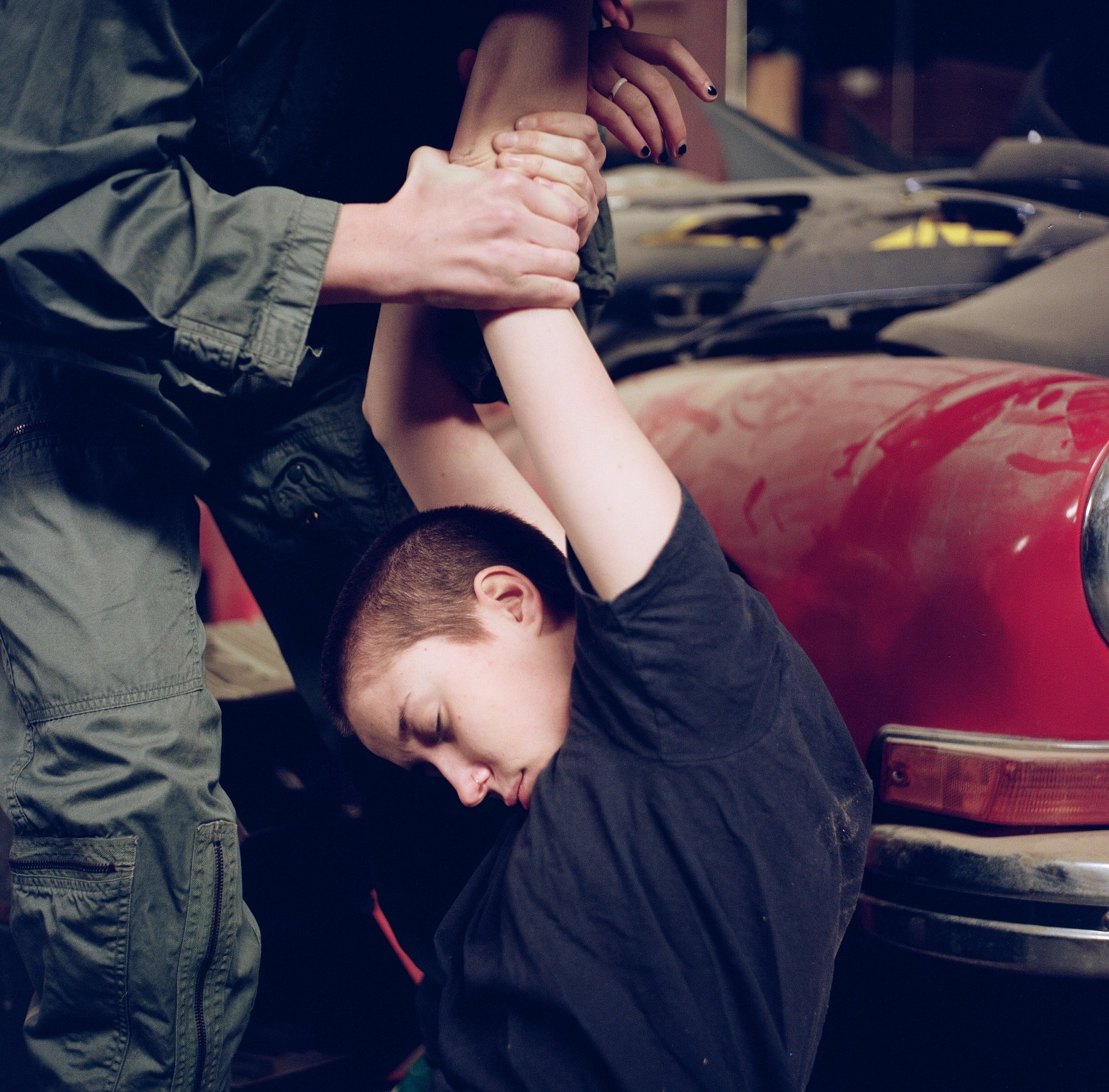Interview with Anthony Hawley
Anthony Hawley. Image still from Birdless, Lost Things (2016/2021)
For Below Grand’s “Cyborgian Swamp Thang II: Or, The Post-Human Machine Untergang” curator Andrew Woolbright included a video piece by artist Anthony Hawley to act as a virtual component to the show. Woolbright has interviewed Hawley to talk more about the artist’s work and practice.
AW: Thank you so much for letting us screen Birdless, Lost things as part of Cyborgian Swamp Thang II. I keep rewatching it. There’s something so wonderful about the formal quality of the video; how you’re utilizing the length of each cut to really build this calm metronome in time. Could you tell us about where this project came from? It seems like the setting itself is so integral to it.
AH: I love that ! A calm metronome in time. The pace is really that of the place—the tempo of this massive warehouse, empty of human contact, but full of human stuff. It’s also the pace of all the stories of these objects individually and collectively, if that makes sense. I didn’t touch or arrange any thing in the location. I directed the performers and choreographed their movements, but the only arranging I did of objects was in the framing of the shot. When I found this location everything was as is and I spent weeks just wandering through the location, marveling at all the items. I was so drawn to the narrative possibilities surrounding not just singular things (like the history of the car or associations I had with it), but also the unlikely arrangement of stuff and what those collections suggested. I felt like I’d walked into some zone outside of time as we knew it and into one where multiple technological histories, memories, desires, archives, and forgotten things had met. It was kind of terrifying and electrifying being amidst that amount of human-made matter. At the time I was thinking a lot about spam and the spam of our lives and I’d stumbled into a physical hard drive of endless data. The pace and time break a little bit when the figures enter the piece.
The literal place was an enormous 126,000 sq ft warehouse in which I had a 3000 sq ft studio. There was also an auto repair shop, a flea market, several other studios, and a steel and iron worker. But everything else was storage for stuff that the owner of the building had collected. The film focuses on the objects because the place itself as defined by their presence had taken on its own life and, like you say, their own time.
AW: I like that. Object spam is a very interesting way of describing the materiality of it. I also enjoy how you talk about populating it with figures; almost turning a closed system into an open one, static and active. I feel like there’s a kind of objecthood in the choreography too. There are these wonderful, awkward figurations created from trying to pick up a limp body.
AH: That’s interesting because when we were testing locations in the warehouse, rehearsing sequences, and taking stills the characters entering the space started to feel both like part of the closed system—i.e., just part of the furniture—and elements that were held within the system, if that makes sense. So you have the main figure, the sleeper, and she is sort of trapped peacefully within the warehouse of objects. She is part of the “furniture”, unperturbed by everything there, but also unable to exit the space. It’s almost as if she has been there so long she has forgotten that she should want to leave. The narrative leaves this unclear—she’s kind of suspended between being unable to escape and being ok with this. Then you have the figure with the astronaut helmet, who appears in the dream of the sleeper and who may or may not physically be within the warehouse. This figure attempts to transport the sleeper, attempts to help her leave, but this fails. So instead their movement, those awkward figurations become a kind of care, another system maybe running adjacent to that of the objects. Care is a big topic here. The ultimate care-giver is the creature at the end. I envisioned the creature as a kind of caretaker of the warehouse, the one who tends to all these things lost and forgotten. Nothing changes at the end, as in no one escapes nor is there a suggestion of what to do with all this stuff, but there is this care as the creature tends to the sleeper. And this critter’s weirdo dayglo light stick bedazzled look is like exactly what is needed as this point in human history.
I should also say that this was originally part of a piece commissioned by the Mitchell Center for the Arts in Houston in 2016 as part of their Ten Tiny Dances program. They invited a group of artists to create a five-minute dance/movement-based work to occur on a 4ft x 4ft stage surrounded by 4 projections. I loved the restriction of this and had already been thinking about creating a piece of science fiction with the warehouse and these figures, but then the invitation to make this work with these restrictions immediately struck a chord with my thinking about being trapped/lost inside this space. In the live performance with the projections, the same figures appear on the stage as in the film—the sleeper and the figure with the helmet. Their movements here are very slow and measured, and limbs become objects or there’s definitely an object-hood in the choreography.
Anthony Hawley. Image still from Birdless, Lost Things (2016/2021)
AW: That’s stunning. I wish our gallery had the space to have the dancers interact with the video in that way. Have you seen Holy Motors? The way you describe the care of the scene reminds me of this gorgeous scene where Denis Lavant and Eva Mendes retreat under a cemetery to escape a photo shoot. He had just been called “weird’ and she had been called “beauty,” and both were escaping their own reification by the art director and photographer of a fashion magazine. Initially, you don’t know how they are going to interact when they are alone together, but then you realize they are both able to comfort each other, alone and on the run from consumption.
I like the idea that the space created subject-object confusion, that it de-animated the dancers. Was the choreography influenced by this? Was there any way that the affect of the space directed the choreography itself?
AH: Oh I love Holy Motors! I hadn’t even thought about it in this context but that makes complete sense. In terms of the space directing the choreography, it really did. When I was working on this project there was a convergence of interests surrounding ideas of storage that definitely informed this subject-object slippage. First, there was a residency on the Gulf side of Florida that I had done the year before in December. The geological make-up of that spot was such that hundreds of small fossilized sharks’ teeth washed up on the shores daily. People would spend endless amounts of time combing the beach for these. I got a little obsessed hunting for them!
At that time I was also collecting spam email scams for a project and I started thinking, what will wash up on the shores in a hundred years from now? Will it be bits of cellphones, fossilized Game Boys, and bits of other technology? Where does it all go? Then not long after this I moved my studio into a space in this massive warehouse of stuff. That was the second part—I started thinking about what gets lost, forgotten, washed away, buried and hidden for centuries only to later resurface.
Finally, some months later I was on the island of Malta working on a project & doing a residency. Malta also has some of the most incredible examples of early neolithic architecture in the world, and I’m fascinated with the storage in those places and went to research them. There I met a friend there who said to me something that really stuck: she said the island had been conquered by so many people over time and that it is so rich with history that you could barely dig up a road without finding graves. I loved this idea! It made me think about the island itself as a unit of storage.
AW: I like the shift between discarded items and discarded architecture/ruins. That’s wonderful.
AH: Around the time I was there, Malta was also a key geographic point for the refugee crisis in Europe and North Africa. Refugees trying to escape conflict in North Africa and get to the European mainland kept getting stuck on this island that didn’t want them and where they didn’t want to be (and in some cases they died tragically at sea). So all of this was in my orbit when I was working on this piece. The choreography is very much informed by thinking about caring for/storing the living (all the living), the dead, and information.
So the space of the warehouse was channeling all this and that informed the super subtle movements in the choreography. I guess the sleeper is a refugee of sorts in the warehouse. It’s interesting to think about the fact that Below Grand’s window space is also this unique compartment. And it’s surrounded by rows of stored goods in the restaurant supply shop!
AW: I think we are attracted to a lot of the same things in that way. I’ve always thought that the circumstances of our gallery supports the art better. It’s surrounded by our landlord’s store and the work of that store makes the art somewhat invisible. I think it’s important for art to not command attention- it’s what makes it different from entertainment. And personally, I’ve thought the constant movement around the work and the lack of acknowledgment clarifies it somehow. It makes the art more of an aberration, which it always is; things that can’t move or chase after you or try to convince you of their worth. It’s there for those who want to notice it, and that’s it.
AH: That’s so beautifully put! And what a fabulous way to think about the gallery and its shows’ potential actions. I’m very drawn to art that you stumble upon, as in the movement of the store and the way you say it makes the art somewhat invisible. The membrane between the gallery and the store is very thin! And in that there’s a kind of blurring of boundaries between reality and fiction, or a potential to rewrite reality with counter-fictions. Things get porous. Is this a gallery or part of a store? Are these goods in a restaurant supply shop or art objects? Likewise the objects in the gallery take on a more potent energy to displace us. I think this is very similar to the way I was thinking about staging the scenes in the film and framing shots. It’s all very intentional, but I also just added very slightly to what was already there. It’s a hybrid of speculative fiction and nonfiction, and it’s hopefully a little murky as to what’s what. That murkiness is very important to a lot of my projects.
Anthony Hawley. Image still from Birdless, Lost Things (2016/2021)



